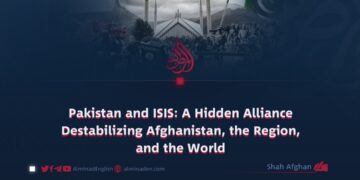Author: Ahmad Aziz
The ISIS Khawarij represent one of the most violent and dangerous tribulations of the contemporary era, leaving behind some of the most harrowing memories in the history of the Islamic Ummah. Through a reign marked by brutality, the mass killing of innocent civilians, the destruction of historical and religious monuments, and the deliberate spread of fear, this despised group inflicted immense suffering upon the Muslim world—most notably in Iraq and Syria, but also in other regions.
However, what led to the emergence of this group? Why did it experience such rapid growth? And what role did America and regional conflicts play in this regard? These are the inquiries that will be explored in this article.
The Causes of ISIS’s Emergence
The escalation of ISIS was influenced by a combination of internal turmoil, external interference, and widespread public dissatisfaction.
In 2003, following the American invasion of Iraq and the dissolution of its army, numerous officers and soldiers—many of whom were affiliated with the Ba’ath Party—were rendered jobless and felt marginalized and disenfranchised.
Simultaneously, with direct backing from the United States, the new Iraqi administration came under Shia control. Some have even alleged that America effectively handed Iraq over to Iran. Subsequently, a wave of persecution, discrimination, and injustice against the Sunni community ensued. These circumstances provoked deep resentment among many Sunnis toward the ruling regime. This growing animosity, indignation, and mistrust created an environment conducive to the rise of jihadist organizations.
The Formation of ISIS
When tracing the roots of ISIS’s formation, we find that the group emerged in 2004 under the name Tanzim al-Qaeda fi Bilad al-Rafidayn (Al-Qaeda in the Land of the Two Rivers or Al-Qaeda in Mesopotamia), led by Abu Musab al-Zarqawi (may Allah accept him). In 2006, the group merged with several other armed factions to form an alliance called the “Mujahideen Shura Council.” That same year, this coalition declared the establishment of the “Islamic State of Iraq,” with Abu Omar al-Baghdadi as its leader.
As instability and chaos escalated in Syria, the group expanded into Syrian territory in 2013 under the leadership of Abu Bakr al-Baghdadi, renaming itself the “Islamic State of Iraq and al-Sham” (ISIS). By 2014, following the seizure of the Iraqi city of Mosul, al-Baghdadi declared the establishment of a global Caliphate, rebranding the group as the Islamic State (IS).
Although the United States succeeded in dismantling Iraq’s former regime, it failed to construct a stable, inclusive, and representative government in its place. The complete dismantling of the previous system and the transfer of authority to narrowly defined sectarian elites deepened the crisis, fueling corruption, violence, and sectarian divisions.
Following the U.S. military withdrawal in 2011, Nouri al-Maliki’s government failed to establish national unity. Sunnis were politically sidelined, and this alienation allowed ISIS to exploit the resulting vacuum. The group rapidly gained local support in areas where the population felt abandoned by the central government.
In 2014, ISIS captured Mosul, Iraq’s second-largest city. Shockingly, Iraqi forces offered virtually no resistance, withdrawing and leaving the city in the hands of the insurgents.
Meanwhile, in Syria, the 2011 anti-government protests had descended into a brutal civil war. Numerous armed groups arose to fight against the regime of Bashar al-Assad. The absence of a unified military force, widespread disorder, and the weakening of state institutions provided ISIS with the perfect conditions to consolidate its presence in Syria as well.



















































